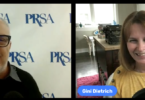For more articles on crisis management, please check out the May 2024 issue of Strategies & Tactics.
The “Stealing Thunder Theory” of crisis communications has been a critical tool for PR counselors for decades. And as businesses and organizations seek to achieve greater transparency and to mitigate the impact of a crisis on overall trust and reputation, it’s proven successful.
The general concept is that, to retain trust and credibility, an organization facing reputation-damaging news should first release information about the approaching crisis — even when it is negative. Thus, the organization is “stealing the thunder” from media, activists, critics and others who might jump on the crisis news and drive a narrative that is even more damaging.
It makes sense. Critical audiences today expect transparency from brands and those with whom they do business. Information, and misinformation, travels at equal speed in the digital world, meaning that leading and controlling the conversation is an advantage.
Communicators have long advocated for the importance of defining the crisis on the organization’s own terms and avoiding being defined by critics, competitors and media. Communicating bad news first — and incorporating values, actions and corrective measures — positions the organization to demonstrate its commitment to doing the right thing, even when mistakes occur.
That said, the communications world today is intensely disrupted. From journalism layoffs to AI-generated mis- and disinformation and from apathy to indifference, how media covers crisis and how the public consumes news has changed. Consider this:
A study by Challenger, Gray & Christmas reported “more than 21,400 media jobs were lost in 2023, the highest (excluding 2020) since 2009.” In January 2024, the same study found that more than 830 jobs were lost in media, and the company projects up to 10,000 journalism and media jobs may be lost in 2024. For PR pros, this means those invested relationships with journalists or reporter contacts who have expertise in the organization or industry may be limited or nonexistent.
In February, the Pew Research Center found that “40% of Americans who get news from social media say inaccuracy is the thing they dislike most about it — an increase of 9 percentage points since 2018.” And while news consumption reached unprecedented levels during the pandemic, that spike quickly fell, and dozens of studies have confirmed that overall consumption continues to decline, even on digital news platforms.
Similarly, changes in algorithms and a decrease in traffic from social media to news sites have dramatically lowered social media’s impact on sharing crisis news. Research from Similarweb found that “the top 100 news and media sites saw a 53% drop in organic referrals from social media over the past three years.”
What does this mean for crisis communications? There is no question that getting in front of a negative announcement by owning the message remains a key strategy. What is worth evaluating is how that message is shared and with whom. Going out early to media deliberately may, in fact, create news where none might have otherwise existed. It also risks extending a limited news cycle or expanding the organization’s portion of the news coverage by providing content that makes the story more detailed than it might otherwise have been.
On the other hand, communicators have a real opportunity to “steal the thunder” and advance their narrative to core stakeholders who are impacted by the crisis — such as employees, community members and customers. Leveraging “owned” platforms — social media, websites, in-person meetings and email — are appropriate tools to deliver a robust and focused message. It is with these audiences where the best favorable positioning can take place.
Owning the story and the crisis narrative and delivering that message to the right target audiences while decreasing reliance on third-party sources like media to cover the crisis is key. This is how communicators can ensure that the thunder, ahead of the ensuing storm, is only heard by those who matter most.
Hinda Mitchell is the founder and president of Inspire PR Group, a national, multi-service public relations and marketing communications firm based in Columbus, Ohio. Mitchell is a sought-after strategic leader for the C-suite and has led crisis management for numerous high-profile, challenging crises during her 30-year career. Inspire is a Women’s Business Enterprise National Council Certified 100% woman-owned company. Reach Hinda at Hinda@InspirePRGroup.com.
[Illustration credit: kazy]






